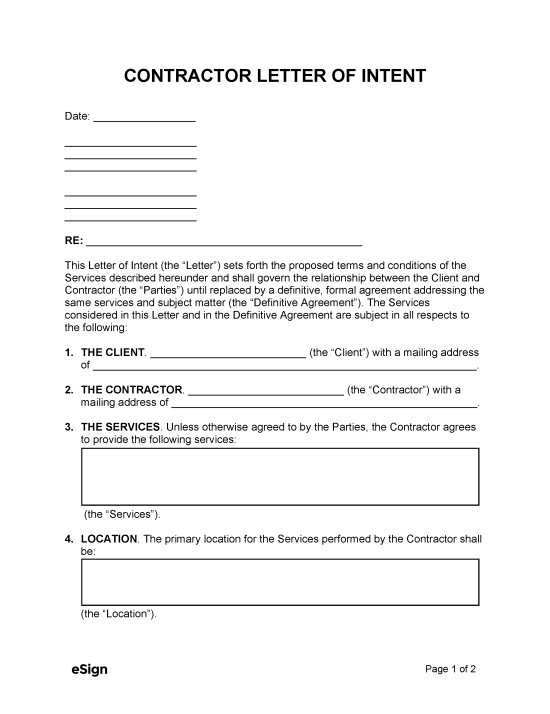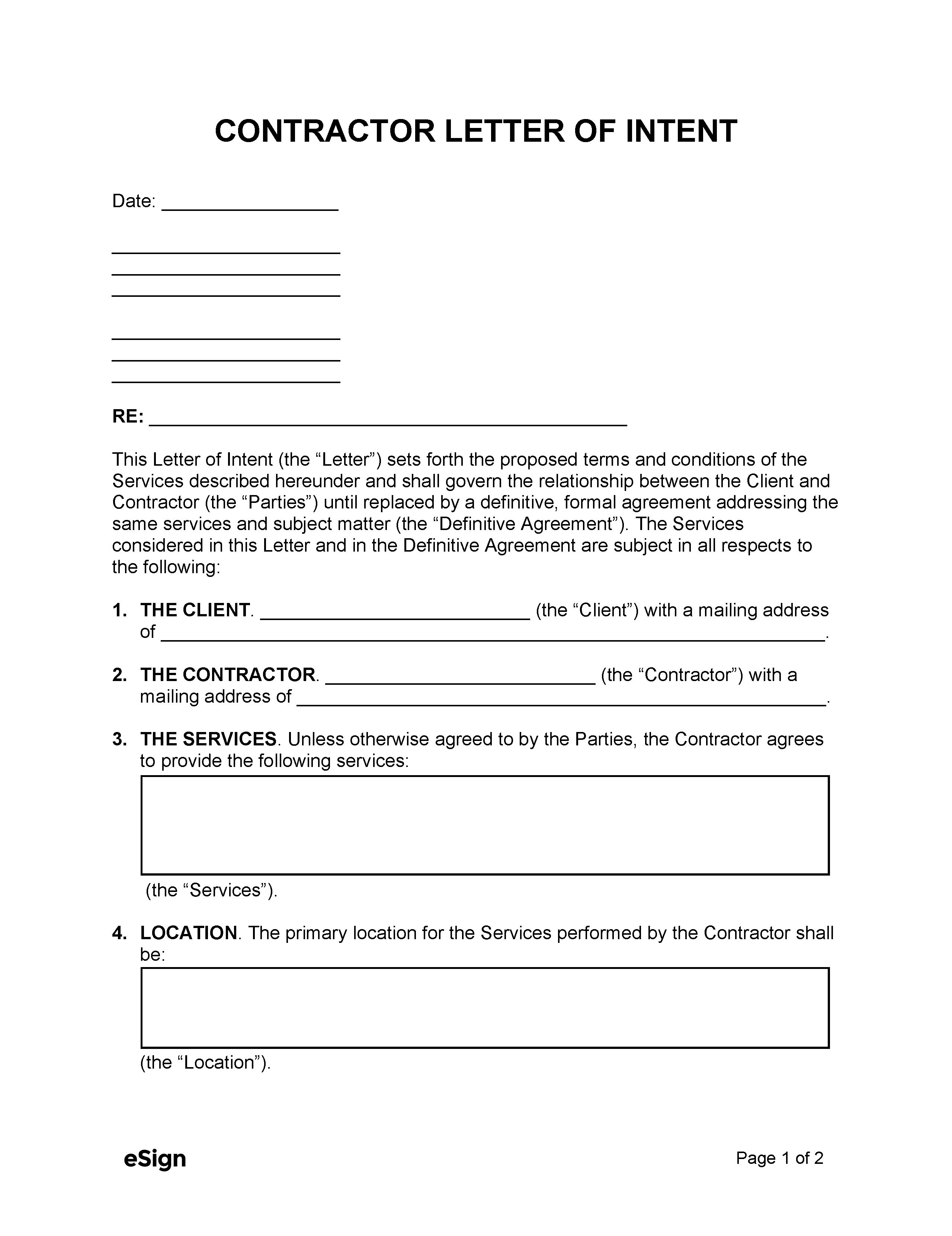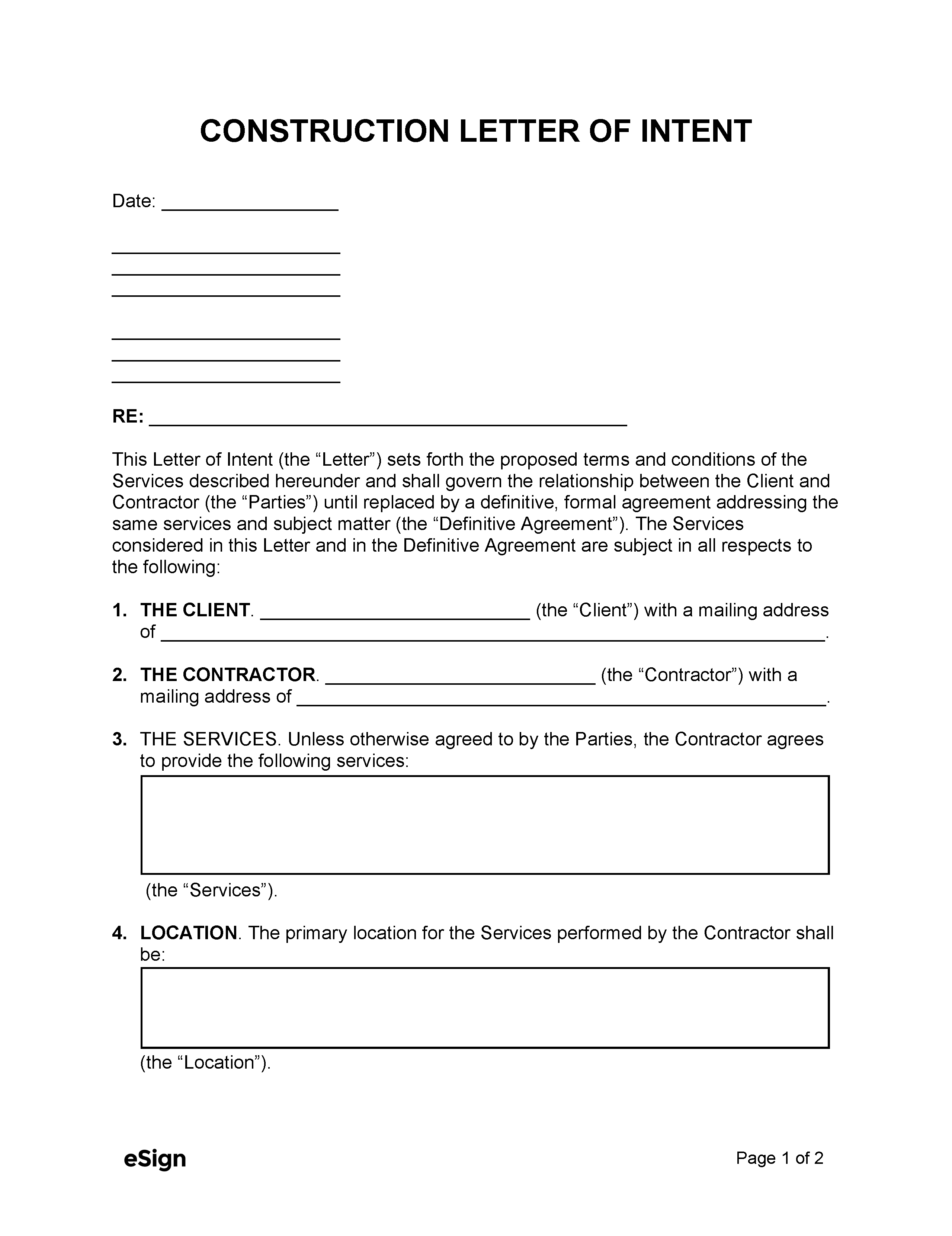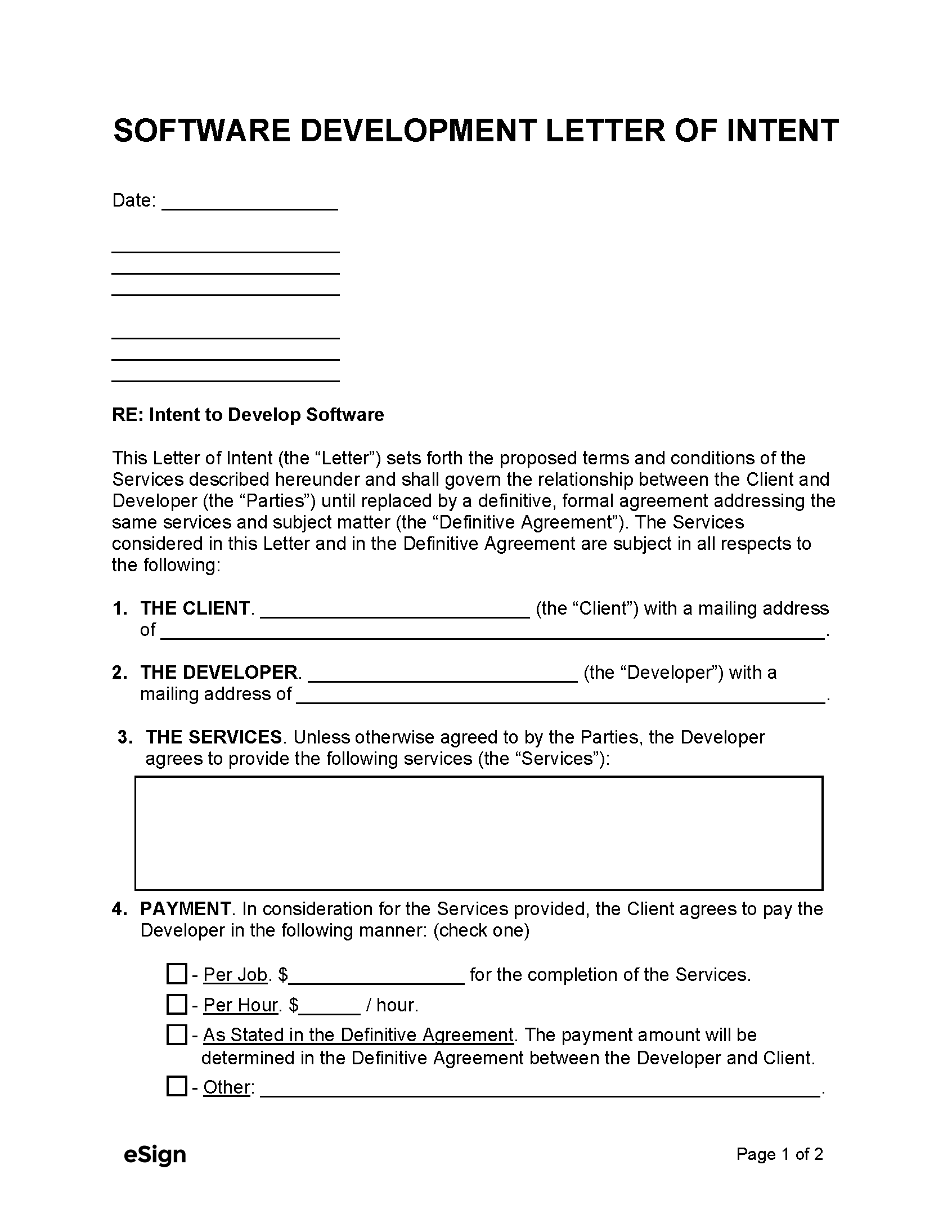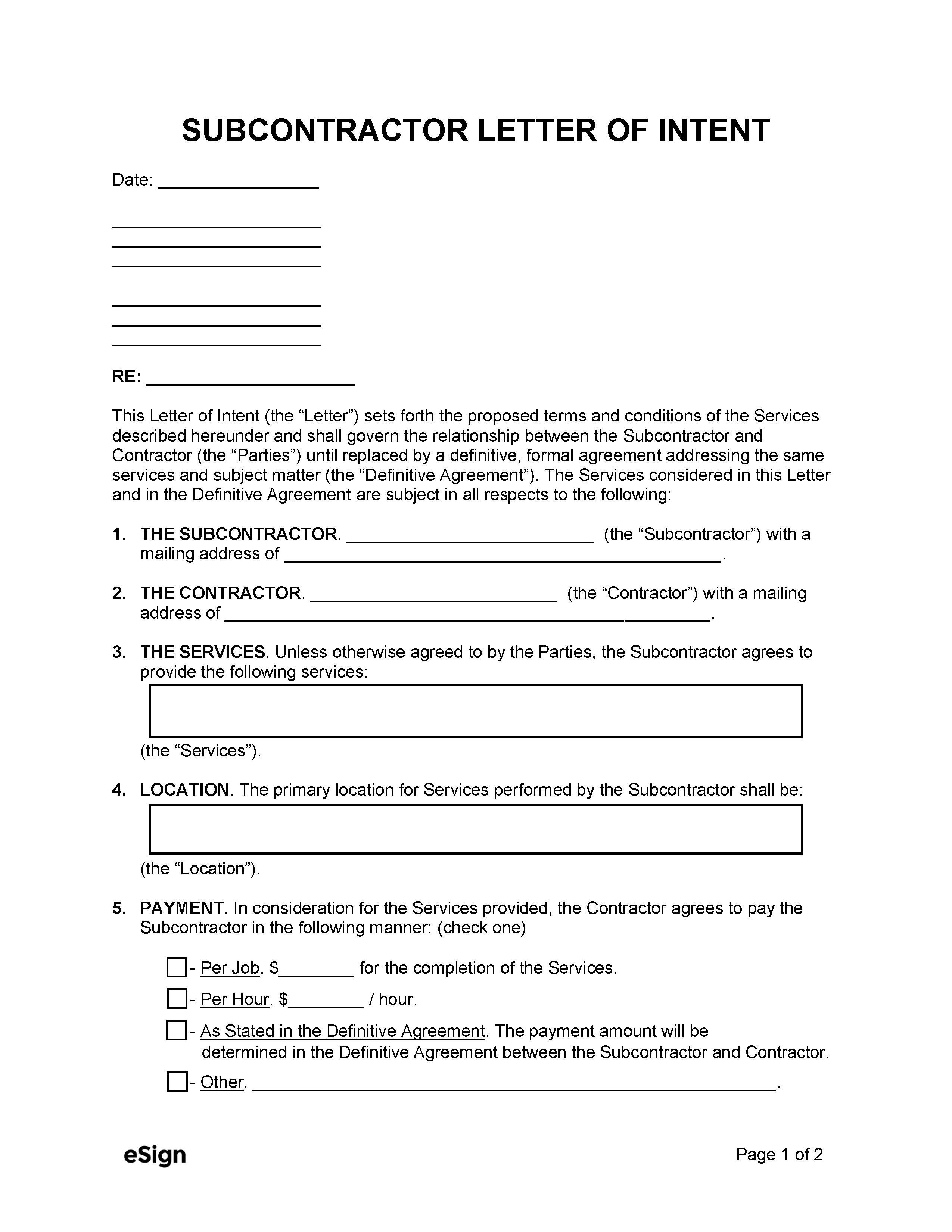By Type (3)
Sample
Download: PDF, Word (.docx), OpenDocument
CONTRACTOR LETTER OF INTENT
Date: [DATE]
[SENDER NAME]
[SENDER STREET ADDRESS]
[SENDER CITY, STATE, ZIP]
[RECIPIENT NAME]
[RECIPIENT STREET ADDRESS]
[RECIPIENT CITY, STATE, ZIP]
RE: [SUBJECT MATTER]
This Letter of Intent (the “Letter”) sets forth the proposed terms and conditions of the Services described hereunder and shall govern the relationship between the Client and Contractor (the “Parties”) until replaced by a definitive, formal agreement addressing the same services and subject matter (the “Definitive Agreement”). The Services considered in this Letter and in the Definitive Agreement are subject in all respects to the following:
1. THE CLIENT. [CLIENT NAME] (the “Client”) with a mailing address of [ADDRESS].
2. THE CONTRACTOR. [CONTRACTOR NAME] (the “Contractor”) with a mailing address of [ADDRESS].
3. THE SERVICES. Unless otherwise agreed to by the Parties, the Contractor agrees to provide the following services: [DESCRIBE SERVICES] (the “Services”).
4. LOCATION. The primary location for the Services performed by the Contractor shall be: [ENTER ADDRESS / DESCRIBE LOCATION] (the “Location”).
5. PAYMENT. Payment shall be made as follows: [DESCRIBE MANNER OF PAYMENT].
6. PAYMENT METHOD. The Contractor shall be paid, in accordance with Section 4, in the following manner: [DESCRIBE METHOD OF PAYMENT].
7. START AND END DATE. The Contractor shall start providing the Services on [START DATE] and the Services shall be due [DUE DATE].
8. INTENTION OF THE PARTIES. This Letter sets forth the intentions of the Parties to use reasonable efforts to negotiate, in good faith, a Definitive Agreement with respect to all matters herein. Notwithstanding paragraphs 8 through 10, which shall be legally binding, any legal obligations with respect to all other matters shall only arise if and when the Parties execute and deliver a Definitive Agreement.
9. GOVERNING LAW. This Letter shall be governed under the laws of the State of [STATE NAME].
10. SIGNATURES.
Client Signature: ___________________ Date: [MM/DD/YYYY]
Print Name: [CLIENT NAME]
Contractor Signature: ___________________ Date: [MM/DD/YYYY]
Print Name: [CONTRACTOR NAME]
When LOIs are Used in Contracting
While client and contractor relationships are typically governed by a contract, a contractor letter of intent can be used when entering into discussions regarding the partnership. In cases such as the ones below, an LOI can be used to outline the parties’ intentions to collaborate, allowing certain work to begin promptly.
- Permits have not cleared.
- Financing isn’t complete.
- Project timeline is short.
- Awaiting contract sums or liability approval.
Benefits
A contractor letter of intent allows the parties to establish aspects of arrangement without any obligation of committing to the project. A letter of intent is useful when a client is looking to hire a contractor but the project is still in the planning stages. In some cases, they might even ask the contractor to start work if they’re on a tight schedule.
Quantum Meruit
Quantum meruit, meaning “what one has earned,” refers to the client being obligated to pay the contractor for any services already provided. The payment amount included in the letter is not a legally binding provision. However, if the contractor provides services before a formal agreement is signed, the client will likely owe them for any work performed.
Binding vs. Non-Binding
A letter of intent, when properly drafted, is a non-binding document. However, it may have some binding provisions, such as the deadline to come to a formal agreement or a clause that prevents the client from shopping around during negotiations.
In a non-binding letter of intent, it should clearly state that the price and services are relayed for negotiation purposes only.
